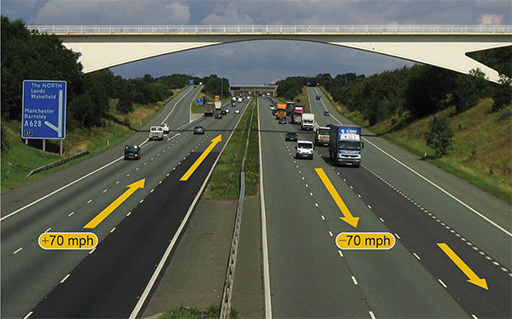4.1 Velocity and speed
Speed is a measure of how fast something is moving. Velocity is also a measure of how fast something is moving, but when talking about velocity the direction is important as well.
Imagine standing in the middle of a bridge above a UK motorway watching the cars. Assume everyone is obeying the speed limit and driving at exactly 70 miles per hour. Everyone is therefore travelling at the same speed, but the cars on opposite sides of the road are travelling in opposite directions. Everyone on the left, travelling away from you, has a velocity of 70 mph, but everyone on the right and travelling towards you has a velocity of minus 70 mph, so they are travelling at the same speed as the drivers going away from you, but in the opposite (negative) direction (Figure 4).

Direction of motion is very important when measuring wobbling stars, as you will see in the next section.
